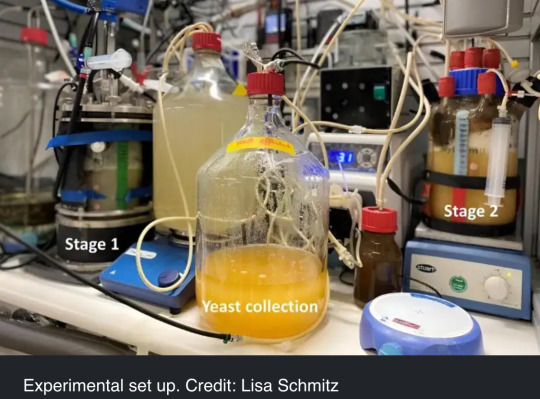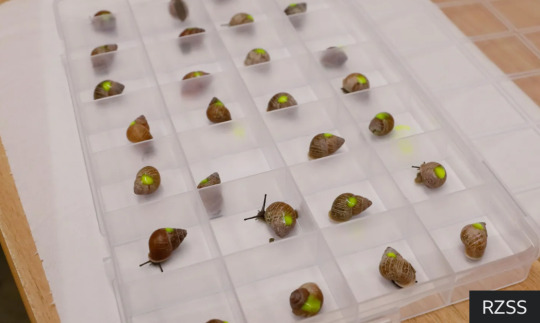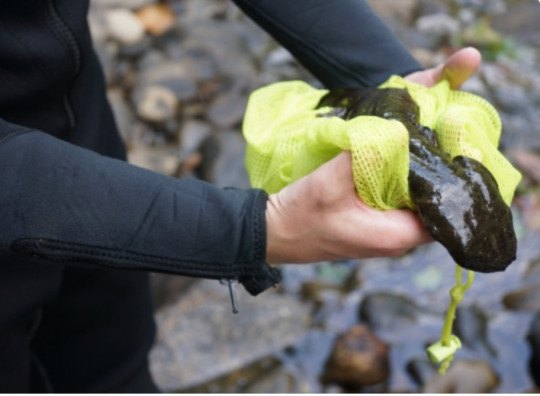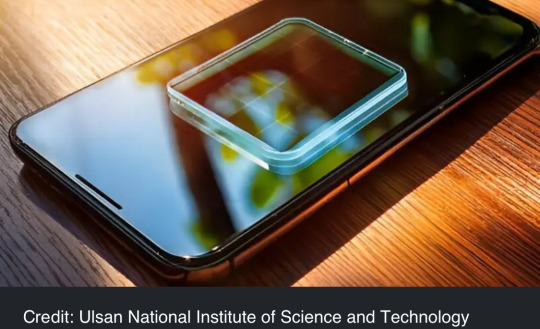#Yup’ik
Explore tagged Tumblr posts
Text










Maker Raven Calls To Human, Maker Raven Travels Between Worlds, Maker Raven’s True Nature (Raven Peapod Creation Story)
Terresa White (Yup’ik/French Canadian)
ceramic, pigment.
This work represents a Far North origin story in which the first man bursts from a pod of a beach pea and meets Maker Raven. In this meeting, Raven raises his mask and shows his face to the man. They look alike! Raven tells the man that he made the beach pea, and so he also made the man.
72 notes
·
View notes
Text


Visit Juniper Moon Folk Arts on Instagram for more info.
We’ve only raised $70 so far but we have found a home for Bruno!! Please share and donate for this incredible, one-of-a-kind woman.
4 notes
·
View notes
Text

Yuungnaqpiallerput: The Way We Genuinely Lived
Model stove made of grass in 1908 as a trade item.
3 notes
·
View notes
Text
Most of the information here is correct, but esk*mo meaning snow eaters (or another common one is ‘eaters of raw meat’) is actually a misconception. Although there are mixed opinions on the exact origin, the most accepted one right now by linguists is that it comes from the French word esquimaux, meaning “one who nets snowshoes.” The word is still a slur and definitely don’t use it if you’re not Indigenous to the circumpolar region, but Nēhiyo/Cree have nothing to do with it.
Also, though the Inuït are the biggest Indigenous group in the circumpolar region, it is also home to the Yup’ik and Unangax̂ peoples!
source:
Folks, friends, y’all…. esk*mo is a slur. I understand a lot of people don’t know that, I don’t want to be a dick about it, but I’ve been seeing it in fics. Wanna write “esk*mo kisses”? Just say “nuzzled noses” or something.
I’m not here to call anybody out, it’s been in multiple fics, I’m not vague posting. This is just a psa. 👍🏻
#i originally found out abt this in indian country today but i couldn’t find the article 🥲#i don’t want to overstep bc again it’s mostly correct#but there’s a bit of misinformation#indiginous#inuït#iñupiaq#aleut#yup’ik#Unangax̂#inuktitut#nêhiyawewin
263K notes
·
View notes
Text
#Woodensday :

Dance Mask Yup'ik artist, Alaska, c. 1900 Wood, pigment, vegetal fiber The Metropolitan Museum of Art, New York L.2018.35.100 “The collective life force of all creatures past, present, and future is embodied in the depictions of #animals on this dance mask. Its bentwood hoop represents the border of the universe and encloses images of a humanoid spirit face, a #seal, a #fish, and a #loon - all within the grasp of a large human hand. A dancer would wear the mask in a winter ceremony honoring the animals who gave their lives during the year and ensuring their return in the coming season.”
#animals in art#birds in art#19th century art#20th century art#bird#loon#seal#fish#mask#dance mask#Indigenous art#Native American art#Yup’ik art#Metropolitan Museum of Art New York#museum visit#animal iconography
66 notes
·
View notes
Text
CHARITIE ROPATI // ACTIVIST
“She is an Indigenous (Yup’ik & Samoan) education and environmental activist and Indigenous Scientist and water Engineer. She is known for working on implementing an accurate and inclusive sub-curriculum of Indigenous peoples in Western pedagogy in Alaska. She has also worked on building pipe and water and sewage services for rural Alaska Native communities. She was awarded Champion for Change by the Center for Native American Youth for her work in education and she has been been featured and nationally recognized for her advocacy in Teen Vogue, The Malala Fund, The Guardian, Forbes and more. She has been recognized as 2023 WWF Conservation Leadership awardee and a 2022 "In the Know" Change maker. She also co-led and created policy in the Anchorage School District that allowed students to wear their cultural regalia when graduating high school. This policy is still in place and is the North America Regional Facilitator for the Youth Climate Justice Fund. She is also apart of the United Nations Women's Leader Initiative. And most recently was featured on the 2025 Forbes 30 Under 30 List, under Education.”

3 notes
·
View notes
Text


kyoshi and avatar katara (swapped au) dancing together (not literally but in a spiritual connection way)! I increased the saturation a lot to hide mistakes because I’m too lazy to finish it all !! (2 versions)
Kyoshi has Ainu inspired clothing (attush ruunpe coat I believe) performing an Ainu Crane Dance. Katara has Yup’ik inspired clothing (kuspuk with decorations) and dances with fans (tegumiak).
Please correct me on any of the terms/clothing, etc!!
3K notes
·
View notes
Text
Dandelion News - September 8-14
Like these weekly compilations? Tip me at $kaybarr1735 or check out my new(ly repurposed) Patreon!
1. Pair of rare Amur tiger cubs debuting at Minnesota Zoo are raising hopes for the endangered species

“[The Minnesota Zoo’s] Amur tigers have produced 57 cubs, [… 21 of which] have gone on to produce litters of their own, amounting to another 86 cubs. […] “They’re showing a lot of resiliency, which is something that we work hard for in human care. We want these animals to have a lot of confidence and be able to adapt to new environments just as they’re doing today.””
2. Powered by renewable energy, microbes turn CO₂ into protein and vitamins

“The team designed a two-stage bioreactor system that produces yeast rich in protein and vitamin B9. [… The protein] levels in their yeast exceed those of beef, pork, fish, and lentils. […] Running on clean energy and CO2, the system reduces carbon emissions in food production. It uncouples land use from farming, freeing up space for conservation[… and] will help farmers concentrate on producing vegetables and crops sustainably.”
3. JCPenney Launches Apparel Collection Aimed At Wheelchair Users

“A major department store is rolling out a new line of clothing specifically tailored to meet the needs of women who use wheelchairs featuring options for both everyday wear and special occasions. [… The clothing have] modifications like zippers located for easy access, pocket positioning and extended back rises optimized for the seated position and shorter sleeves to limit interference with wheels.”
4. Snails bred in Edinburgh Zoo sent to re-populate species in French Polynesia

“Thousands of rare partula snails bred at Edinburgh Zoo are to be released in French Polynesia to restore the wild population of the species.The last surviving few of the species were rescued in the early 1990s[….] 15 species and sub-species [are being bred in zoos for repopulation], the majority of which are classed as extinct in the wild.”
5. [NH Joins 19 Other States] to Provide Essential Behavioral Health Services Through Mobile Crisis Intervention Teams
“[CMS] approved New Hampshire’s Medicaid State Plan Amendment for community-based mobile crisis intervention teams to provide services for people experiencing a mental health or substance use disorder crisis. […] The multidisciplinary team provides screening and assessment; stabilization and de-escalation; and coordination with and referrals to health, social, and other services, as needed.”
6. Recovery plan for Missouri population of eastern hellbender

“It is expected that recovery efforts for the Missouri DPS of the eastern hellbender will reduce sedimentation and improve water quality in the aforementioned watersheds, which will also improve drinking water, as well as benefit multiple federally listed mussels, sport fish and other aquatic species.”
7. How $7.3B will help rural co-ops build clean power—and close coal plants

“[The funds are] serving about 5 million households across 23 states [… to] build wind and solar power, which is now cheaper than coal-fired power across most of the country. […] Some of it will be used to pay down the cost of closing coal plants[….] federal funding could help co-ops secure enough wind, solar, and battery resources to retire their entire coal capacity by 2032, cutting carbon emissions by 80 to 90 percent and reducing wholesale electricity costs by 10 to 20 percent[….]”
8. Native-led suicide prevention program focuses on building community strengths

“[Indigenous researchers have] designed programs that aim to build up a community’s endemic strengths, rather than solely treating the risks facing individuals within that community. By providing support and resources that enable access to Alaska Native cultural activities, they hope to strengthen social bonds that build resilience. […] “In a Yup’ik worldview, suicide is not a mental health disorder, and it’s not an individual affliction, it’s a disruption of the collective.””
9. Another rare Javan rhino calf spotted at Indonesia park

“A new Javan rhino calf has been spotted in an Indonesian national park, the facility's head said Friday, further boosting hopes for one of the world's most endangered mammals after two other […] calves were spotted earlier this year at the park, which is the only habitat left for the critically endangered animal.”
10. Transparent solar cells can directly supply energy from glass surfaces

“[Researchers have] unveiled a method of supplying energy directly from glass of buildings, cars, and mobile devices through transparent solar cells. […] It has also succeeded in charging a smartphone using natural sunlight. It also proved the possibility that a screen of a small mobile device can be used as an energy source.”
September 1-7 news here | (all credit for images and written material can be found at the source linked; I don’t claim credit for anything but curating.)
#hopepunk#good news#nature#tiger#endangered species#sustainability#animals#nutrition#jc penney#wheelchair user#adaptive clothing#fashion#snail#edinburgh#scotland#french polynesia#mental health#new hampshire news#missouri#hellbenders#salamander#wind energy#solar power#clean energy#native#community#rhino#technology#baby animals#solar panels
508 notes
·
View notes
Text

Early ethnographies and ethnohistoric accounts (Nelson 1899; Lantis 1946, 1947; Ostermann 1952; Zagoskin 1967; Himmelheber [1953] 1993; Jacobsen 1977) that documented Yup’ik lifeways, ceremonies, and folklore suggest that animals in Yup’ik society were conceived as conscious beings able to think, speak, and act as humans do—that is, as “other-than-human persons” (Hallowell 1960). This belief system endowed animals with agency and, hence, required hunters to use a variety of ritualized practices to communicate with and demonstrate respect to animals—a worldview that appears to have a significant time-depth in the North in general, and along the Bering Sea coast in particular (Jordan 2008; Losey 2010; Hill 2011, 2013). In this paper, we will use the term relational ontologies to refer to this set of beliefs, “in which animals and other ‘things’ act as independent, sentient agents and are constituted socially, through performative interaction” (Hill 2011, 120). Daily human–animal interactions, which occurred through speech, thought, and action, intensified during communal ceremonies that were designed to create a liminal time and space in which animal spirits were invited to enter the human world so as to honour and maintain the relationships between humans, animals, and the spirit-masters of game, who release animals to the hunter (Fienup-Riordan 1994; Jordan 2008; Hill 2011). Nelson (1899, 395) described mask festivals as events of thanksgiving to the spirits and power of earth, air, and water for giving the hunters success. The presence of animal spirits in rituals was invoked by means of masks, which were worn not to conceal but rather to reveal the unseen, to uncover another “person” (Ingold 2000, 123–24). Both stylized and realistic animal masks embodied transformation from one “person” to another, enabling animal spirits to incarnate in human form and humans to see as animals (Fienup-Riordan 1987).
—Mending the Breaks: Revival and Recovery in Southwest Alaska Mask-Making Tradition by Anna Mossolova
#the terror amc#tuunbaq#aja#silna's father#yup'ik masks#yup'ik culture#inuit-yuit-unangan culture#masks#animism#indigenous religion#broadly relevant and more specifically so to this scene from the terror as i recall that it took some inspo from yup'ik masks for this mask
54 notes
·
View notes
Text

Happy International Women’s Day to the Moon
[id: photoed is a digital drawing of Princess Yue from Avatar the Last Airbender. It is in 3/4 view from the bust up and she is face it left. Her soft gaze with purple eyes are looking towards the viewer with a slight smile that has a dark red lip stain. Her hair is similar to in the show, except for braids, her hair falls loose down her back. Her white hair is iridescent and glows and she is wearing traditional Yup’ik jewelry with blue, tan, and grey beaded earrings that are attached with a matching beaded necklace that falls under her chin. The background is a very dark blue with slightly brighter star and moon pattern.]
85 notes
·
View notes
Text



Magic Seal
Susie Silook (Yup’ik, Inupiaq)
walrus ivory, baleen, ink, maple, brass
“I’ve used ancestral imagery and forms in this piece. In our (Yupik and Inupiaq) stories, humans visit animals (who are all sentient beings) that live in the sea in houses, and remove their fur coats and appear as humans. Hence the “Yua” or man, as depicted in the carved face. The ribs are depicted by the red area, and is thought to portray shamanic vision. The baleen inlay represents the spine. The seal outline represents the Spirit of the Seals.
In our beliefs, a man and seal can have an ongoing relationship based on respect, where the seal, in each reincarnation, offers him/herself to the same hunter repeatedly.”
67 notes
·
View notes
Text




Terror s1e1: Go For Broke, Aidan Monaghan photography
Olivier de Sagazan: Transfigurations
Yup’ik mask, 19th century
45 notes
·
View notes
Text

1 note
·
View note
Note
Hi i do not go here (irt the fandom) at all but i luuv the posts you make about inupiaq culture and its great to hear from an inupiaq person directly and not from a book written by a colonizer from the 1900’s 😭 if you dont mind/if you know would you describing inupiaq death/funeral practices??? Traditional or otherwise, everytime i try and go do my own research its always on inuit or yup’ik practices and its like no im looking for inupiaq specifically lol anyways thanks i love your blog even if i’ve never interacted with atla sorry for the word vomit 🫡 thank you!!
I can't find much on traditional funerary practices. A common theme from what i have found is keeping the body intact and away from animals when the ground is to hard for burial. If i had to guess this is more for sentimental purposes than religious or spiritual.
For modern day, you typically see funeral potlatches. Many Inupiat are Christian so it's not uncommon to have a Christian prayer at the beginning. Food is usually a combination of traditional foods and like, veggie trays. Sometimes you have funeral T-shirts but i've never gotten one so it's not my experience
28 notes
·
View notes
Text
Trump is trying to destroy public media, and that’s very bad
I know the news is constantly overwhelming rn, but one thing I’m not seeing talked abt enough is how Trump has been systematically trying to remove already appropriated money to the Corporation for Public Broadcasting for public media. Today he asked Congress to claw back over a billion dollars that was meant to go to public broadcasters for the next two years. That money goes to PBS and NPR, but do you know who REALLY benefits from that money that this is really going to hurt? Your local public radio or tv station.
When NPR and PBS testified in congress a while back, they brought president of Alaska Public Media Ed Ulman with them. Why? Bc Alaska has mostly small-town rural public radio stations. Not only are small-town stations the backbone of their community with important local news that they won’t find anywhere else, they also keep people alive. Here’s an excerpt from a story:
Ulman, of Alaska Public Media, said oftentimes public media is the only option for people who need access to emergency broadcasts, especially in rural areas. "We provide potentially life-saving warnings and alerts that are crucial for Alaskans who face threats ranging from extreme weather to earthquakes, landslides and even volcanoes," he said. “Nationwide, our public television interconnection system supports the PBS Warning, Alert, Response Network, a critical pathway for the distribution of wireless energy emergency alerts to cell phones," Ulman said.
One of those stations is KYUK in Bethel, the first and oldest native-owned station in the US which broadcasts daily in English AND Yup’ik bc many in the region do not speak English. 70% of their funding comes from the CBP.
KYUK is one of the higher figures I’ve seen when looking into CBP impacts at different stations around the US.
Here are some others— KCCU radio is in Lawton, OK, may lose 16.7% of their budget. “At KCCU Radio, we provide critical emergency alerts that can save lives during severe weather events. In 2024 alone, we broadcast over 366 weather alerts, including tornado warnings, flash flood warnings, and child abduction emergency alerts. These alerts are indispensable for community safety.”
KSUT in Ignacio, CO will lose 20% of their budget, according to their website, “KSUT Tribal Radio's service area includes extremely remote areas with limited or no internet or phone service. As such, it is often a lifeline to a primarily Native American listening audience.”
WPSU in central Pennsylvania also stands to lose 20%— they broadcast to over 1.3 million people in a mostly rural part of Pennsylvania. I can go on like this all day. Research your local stations, they probably have a page breaking down cost.
This is a long way to say that by undoing CBP funding, we are harming the most vulnerable communities that depend on public broadcasting the most.
If this is something you care about, now is the best time to act. The House is expected to vote on this in days. Head to https://protectmypublicmedia.org to learn more about how you can help.
#us politics#public media#protect public media#if this goes into effect this will destroy so many communities#including ones I deeply love#if you have the means to act please do#thoughtsfromtheprimordialsoup
3 notes
·
View notes
Text
#2549 - Nephroma sp. - Kidney Lichen

A widely distributed genus of medium-to-large foliose lichens, with kidney-shaped apothecia on the lower surface of their lobe tips, which often curl upwards. Most species grow either on mossy ground or rocks, or on trees.
All species of Nephroma contain the cyanobacteria Nostoc which allows the organism to fix nitrogen. Some species also contain a green alga photobiont (Coccomyxa) and the Nostoc is restricted to warty structures on the upper or lower surface of the lichen.
Several species are restricted to pristine, old growth forests.
Nephroma has been used to produce brown dye and blue dye. Nephroma arcticum is called kusskoak by the Yup’ik of Alaska, and eaten after being boiled with crushed fish eggs, and in a medicinal tea. The special also contains several antifreeze proteins that have been used to improve the texture of low-fat ice cream.
St. Arnaud, Southern Alps, New Zealand
7 notes
·
View notes